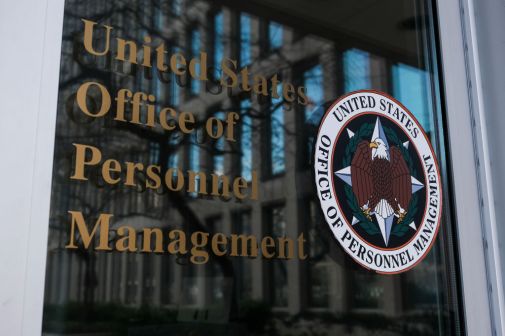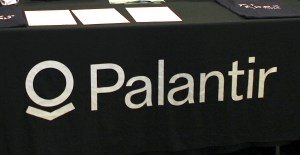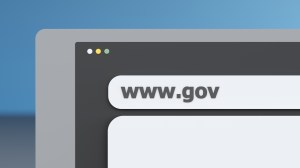USDS execs: Americans expect Uber-like government
The federal government’s struggle to provide effective citizen-facing IT services for the past few decades, culminating in the disastrous rollout of Healthcare.gov in 2013, is rooted in its inability to match the pace of technological deployment Americans have come to expect from the private sector, a group of digital government experts said Thursday.
With the invention of the smartphone and a culture driven by on-demand, on-the-go apps, U.S. Digital Service Administrator Mikey Dickerson said Americans’ expectations for their interactions with government are being set by companies like Apple, Facebook and Uber.
“The technology industry is evolving at a pace that the government has not kept up with,” Dickerson said during a Yahoo News conference on tech and politics at Drake University in Iowa. “At a large scale … website design fashions are changing very quickly, people are getting much better at designing products that are intuitive and easy to use.”
“Government is regularly not delivering services to citizens that are raised in the Internet era and are raised expecting to have an Amazon-like experience for buying a book or a Kayak-like experience booking a plane ticket,” said Haley Van Dyck, USDS deputy administrator. “And when you shift to government and try to get student loans or get your Social Security check or a veteran trying to apply for benefits, it’s not the same experience. And what that creates is fundamentally a lack of trust.”
The problem is not so much a lack of technical expertise in government, though, but a cultural one, Van Dyck said.
The products and services her team and others, like the General Services Administration’s 18F, are developing aren’t “actually that technically complicated or sophisticated,” she said. More so, they’re acting as proofs of concept for agile, rapid and iterative technology development that have proven successful in the private sector, looking to make that stick in federal agencies.
A primary tenant of this digital revolution, Van Dyck and her fellow panelists said, is building around the needs of the user and making their interactions easier, which happens to be the first play in the U.S. Digital Services Playbook.
“When you’re turning to the government for help, you really need it,” she said. “And the last thing we should be doing is making that unnecessarily complicated.”
Scaling change
In reforming the way agencies build websites and other digital services, digital experts believe it’s possible to scale that change beyond technology — as Healthcare.gov showed, technology and policy are now very much intertwined, and public opinion about huge policy issues can now hinge on as small a thing as the success or failure of a website.
“When we’re working with government and showing them that doing things in a different way has a better outcome for people, we’re able to push change upstream to the policy makers,” said Catherine Bracy, senior director of partnerships and ecosystem at Code for America. “You have to focus on the point at which a citizen is interacting with government, make that work, and then flow everything else upstream from there.”
Dickerson said that since that 2013 Healthcare.gov meltdown, the Obama administration has gotten better at bringing “the nerds in the basement” to the policy table. And it’s those nerds who take into account the needs and concerns of Americans who will end up using a service.
The Education Department’s recent release of the College Scorecard, for instance, was built around user testing. Members of the USDS team visited Anacostia High School near Washington, D.C., and let students and guidance counselors — potential users — test the tool.
“We bring that information back into the West Wing, into the Roosevelt Room, and say, ‘I know you wanted features 1, 2 and 3, but we took it to a bunch of high school kids … and none of them used features 1 and 3. Feature 2, we think we should do, and there’s a feature we didn’t think of that’s really more important that we should implement instead.’ And we had a decent amount of influence on how the policy was developed.”
He added: “We were involved from the beginning of that policy development process. [We] were there with the people making decisions about what data we were going to actually develop, how it was going to be released, how we were going to present it, how we were going to drive traffic to it — all the things which are going to in the large scale over years affect the educational outcomes for millions of people.”






